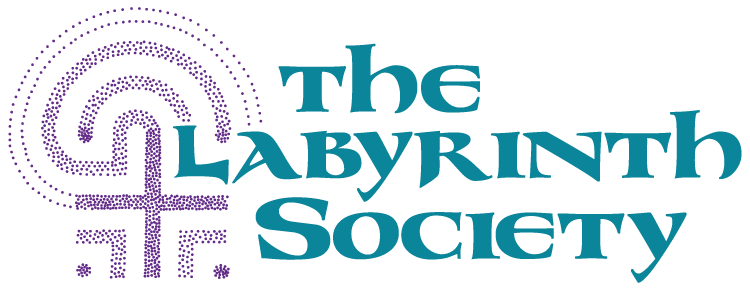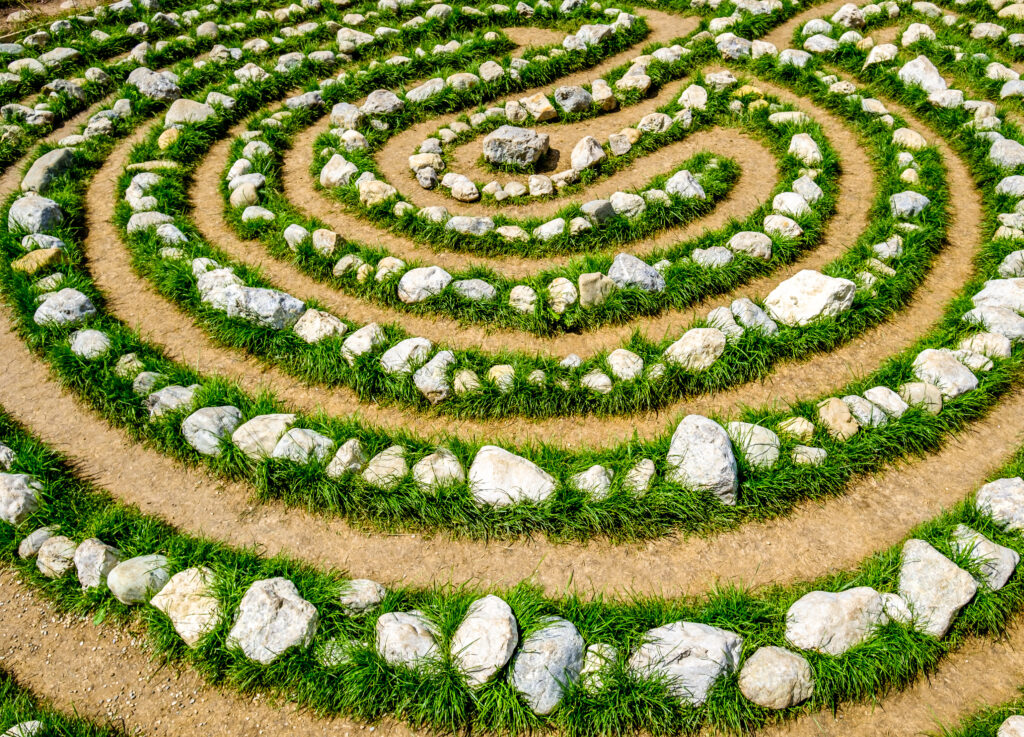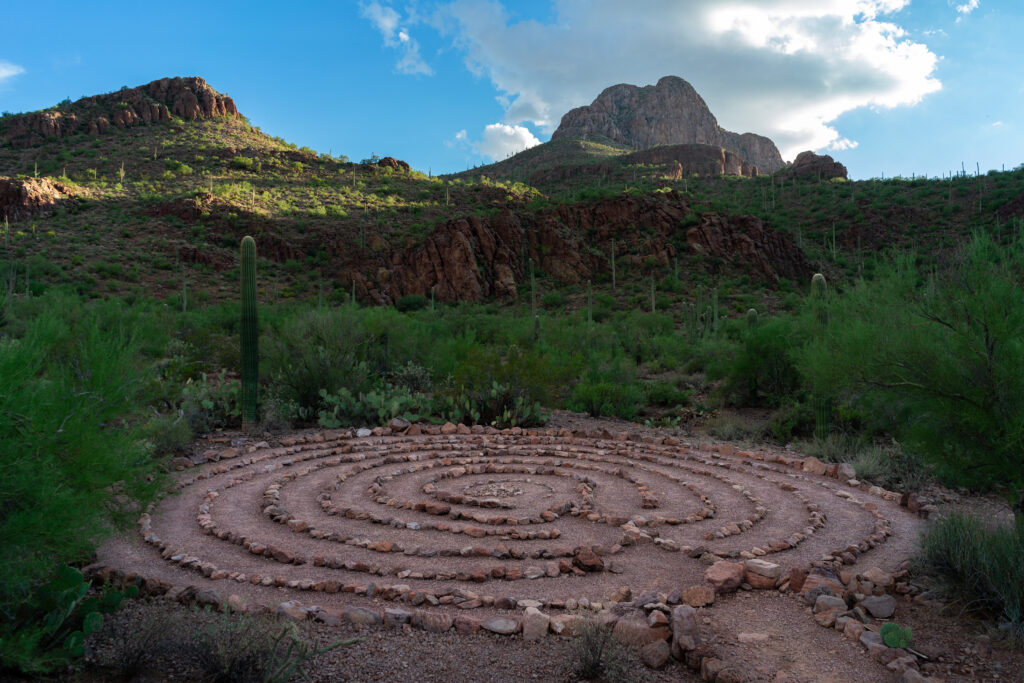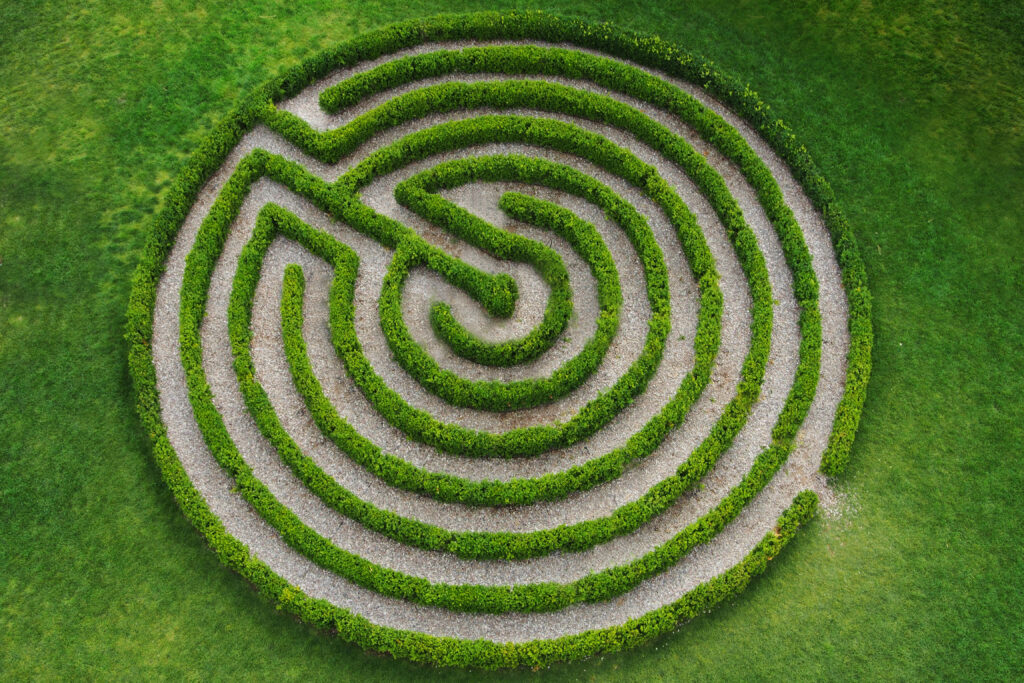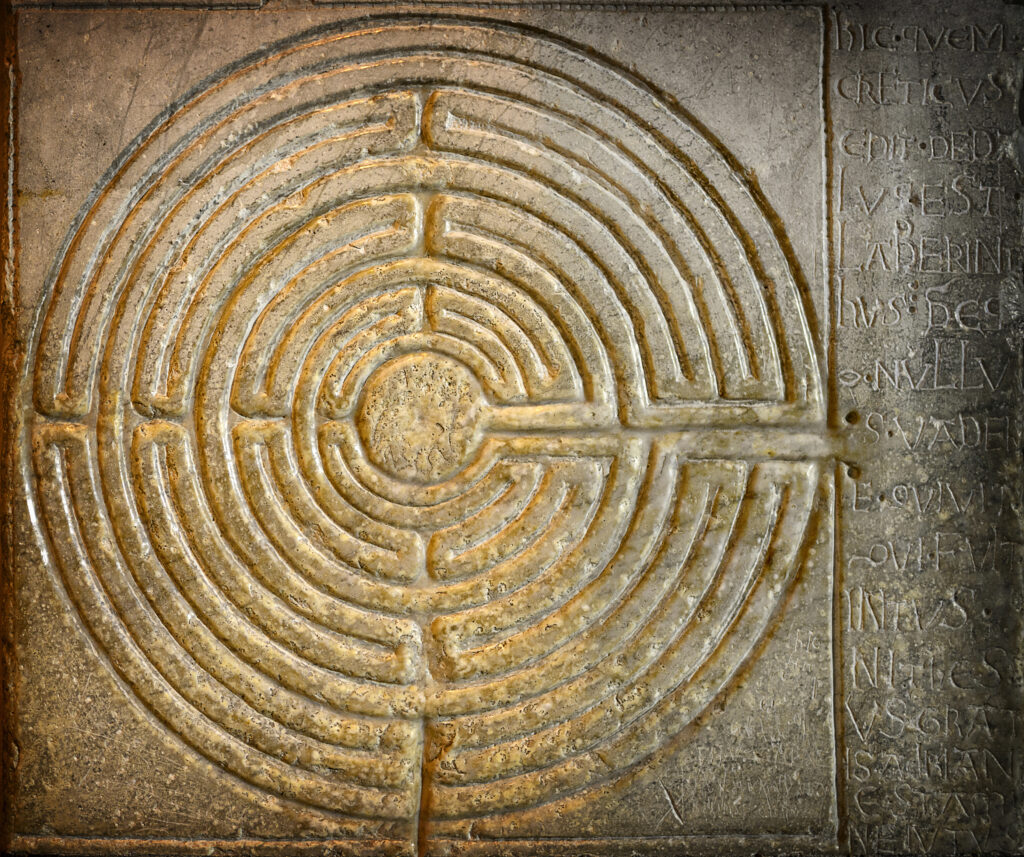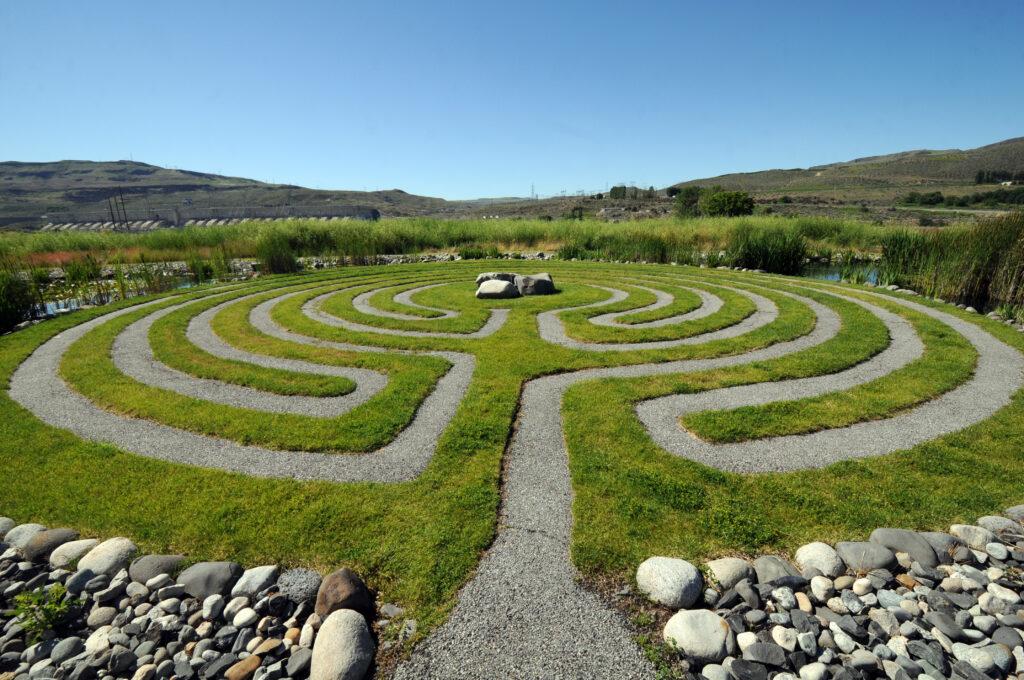By Rev. Sig Lonegren M. A.
It is clear that labyrinths have been used for millennia as tools for rituals and ceremonies. For example, many of the Swedish Viking inland labyrinths are oriented toward the Mid-Summer Solstice Sunset. Mid Summer (St John the Baptist Day, June 24th) has long been a very important holiday in Sweden. So it comes as no surprise that the Vikings saw that as an important turning point of the year.
“Solstice” means “Sun Stands Still.” June 24th is the first day after the Summer Solstice (usually the 21st of June) when, if you are paying very close attention to the Sun’s rising or setting point on the horizon, you can see that the sunlight is actually going away – the days are growing shorter. Likewise, on the 25th of December – at the exact opposite end of the solar year, if you have once again been paying close attention to the rising or setting sun on the horizon, you can see that the light is returning (the days are having more light than dark) – an apt reason for that day being chosen by the Church as Christ’s birth.
But labyrinths have been used to mark many other points on the solar year as well. Another good example is Beltane or May 1st. This is when, in Northern Europe and particularly in the British Isles, people dance around the May Pole. The labyrinth can be used by a number of dancers, each carrying a long ribbon that is attached to the top of the pole which is set into the ground at the goal of the labyrinth. As a result of holding on to that ribbon and walking the labyrinth path, a very interesting ribbon pattern is created on the pole. (And, it can be undone by walking out.)
But of course, labyrinths can be used to celebrate other occasions than specific days of the solar year as well. One good way is to use the labyrinth to begin and end a longer ceremony. At the beginning, participants walk in to the goal, and cross over the in the centre of that labyrinth cross and walk out the mouth. At the end of the ceremony, they walk in and immediately step over the crossing to the goal, and then walk out the full way from the goal to the mouth. In this way, the labyrinth acts as a parentheses to enclose the beginning and end of a ceremony.
Labyrinths are an excellent way to make vows at handfastings or weddings. Using a Classical Seven Circuit Labyrinth, walking one-at-a-time, on each path, one of the partners talks about how they relate to this event – on the first path (#3), what do they think about getting handfasted/married, second path (#2), how do they feel about it, third path (#1), what are the physical realities of this union?, fourth path (#4), what are the spiritual ramifications?, fifth path (#7), invoke your Deity of Choice, sixth path (#6), what is your vision for this union?, seventh path (#5), what is the first step you need to take to achieve this vision?, and then the goal, where you await your partner who goes through the same steps. Then the reverse is played out, where the results of this vision and first step are spoken of in terms of their spiritual, physical, emotional and mental ramifications. It is not necessary for the couple to remember the tasks on each of the paths. Someone else can state them as they begin each path. Also, it is much better not to plan what you’re going to say on each path in advance. Allow the magic to happen!
There are as many possible ceremonial uses as there are labyrinths and people using them, but one more wonderful use of them is the Appleton – a dance that has been done at numerous TLS Gatherings. It was invented/discovered by long-time TLS presenter Jon Appleton, and is a way of getting lots of people starting in two rows to dance the seven circuit in such a way that, IF DONE CORRECTLY, one continues to meet and dance with their partner going in and coming out again and again.
Ultimately, for me, the labyrinth is the stirring pattern for that old Celtic Goddess Cerridwen’s great cauldron. It is a way of stirring up the energies to create a truly magical event. We walk the labyrinth path in stone rings here in the UK for this purpose, and it can be walked in fields and in snow as well to wind up the energies.
On the Labyrinth Society Global Group on Facebook we discuss more Ritual and Ceremonial uses. Please check it out, and add your own mixture to this wonderful spiritual brew.
